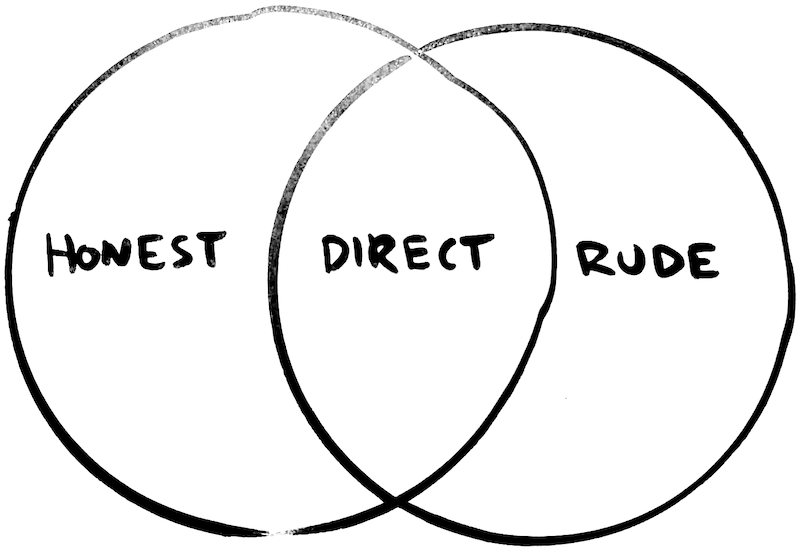How to give feedback without being rude
In Dutch culture, we take great pride in being direct. However, this is often interpreted as being rude, especially by non-Dutch people. We justify these opinions and attitudes by saying: ‘I’m just being honest’, but do we have to be rude to be honest? For designers, sharing (direct) feedback is crucial. This article exhibits insights on how to avoid being rude in an intercultural work environment.
Why we shouldn’t always be direct
Before I joined the Design Chapter at Rabobank, I lived and worked in Panama City for almost 4 years. I can tell from experience that we have many things in common with Latin culture, but there’s a lot more we don’t.
One of my first intercultural experiences at work regarding directness occurred during a ‘design sync’ with fellow designers from other departments. We discussed recent deliverables and exchanged feedback. At some point, one of the designers proudly presented a large promotional print. I gladly shared my thoughts on how to give it an upgrade, being quite specific in terms of color usage, spacing and typography. But everyone seemed shocked, and the room remained awkwardly silent for a while.
Was it something I said?
In my mind I reacted, “Get over it, we’re at work! I can’t be honest about this?”. Even if I was right in terms of brand guidelines or universal design standards and whatnot:
- it was already printed;
- it was just my point of view;
- and most importantly: I didn’t ‘read the room’ and started sharing my thoughts without cultural filter.
After the awkward silence, the design manager rightfully translated my comments into a softer evaluation that returned some smiles and acknowledgement.
Direct is not a universal standard
In Latin America, the feedback style is indirect. Getting to the negative feedback right away without introduction can be perceived as offensive, definitely if it’s in front of other people.
Obviously I wasn’t aware, but after this embarrassing experience I started to realize that the Dutch often come off as impolite communicators when there are people of varying cultures involved.
Defining directness
As companies are paying more and more attention to creating diverse teams, chances are you’ll find yourself in a situation where having picked up the following definitions might come in useful:
- directness: ‘the quality of being plain and straightforward.’
- honest: ‘free of deceit; truthful and sincere.’
- rude: ‘offensively impolite or bad-mannered.’
Apparently, rudeness doesn’t have much to do with honesty. However, in being direct you could go either way. Creating this Venn diagram helped me to make a little more sense of it.

I greatly enjoy talking about cultural differences in my team and when I showed this diagram during a team building event, it appeared that people got the reference right away. It seems that however diverse the crowd, conclusions are the same: the directness of the Dutch is regularly perceived as rude.
It’s easy to not be rude
It doesn’t have to be that complicated to get rid of the rudeness while still being direct. Right in between thinking and speaking, there’s an opportunity. Even if you’re sure about something, you can come a long way by asking yourself these questions:
- Is someone asking for my opinion?
- Why do I want to share my thoughts?
- What happens if I don’t?
When in doubt, be kind
My personal antidote to rudeness is a quote from the movie ‘Wonder’ (written by Dr. Wayne Dyer). Embrace this principle and you’ll be impressed by its effects:
"If you have the choice between being right and being kind, choose kind."
I’ve always been very rigid in being right and telling the truth but being respectful and kind has brought me a lot more.
